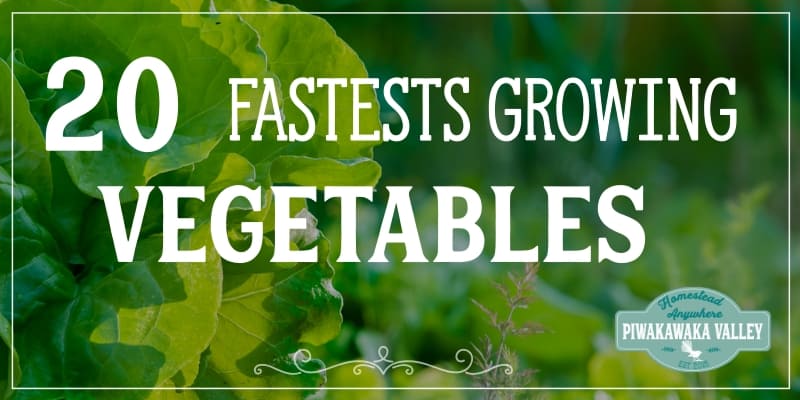This post was most recently updated on April 12th, 2023
So many people today find themselves living in a city wishing that they were out in the country enjoying the life. Becoming an is a growing movement around the world as more people realize the importance of having control over your supply.
Please read: This information is provided for educational purposes only and is not intended to treat, diagnose or prevent any disease. We encourage you to make your own health care decisions in partnership with a qualified health care professional.
This post contains affiliate links, this means at no extra cost to you, we make a commission from sales. Please read our Disclosure Statement
Sadly owning a large property and being self sufficient is only a dream for many, as the realities of needing to be near work over take the wish for a free-er life. However, there are some brilliant ways that you can turn your or condo into a mini , and you can start today!
Also, if you want to move to the country and make your living doing what you love, there are ways to raise capital and involve the community so you don’t have to fund the whole thing yourself! My friends Jaymie & Shelby have done it, and they have put together a free video so you can learn to do it too. Check it out here!
What is
While you may not have any green to your name, that does not mean that you cannot embrace the mindset and start in your . Many live within the city limits, so maybe this idea of is something that you might be able to do where you live.
There are many things that you can do just as well living in an as I can living on 10 acres. These skills will help reduce your outgoing costs, improve the quality of your and make you more self reliant and self sufficient.
The mindset
is a state of mind not a piece of . Frugalness and health are at the core of the homesteading ethos, as is self sufficiency and community.
All of these things can become a part of who you are while you are living in a small in the city. You might not have the same amount of , but that isn’t to say you cannot grow and preserve .
How to in an
Below are a lot of different ways that you can start your . Don’t try and start them all at once – choose one or two and learn to do them well before adding more.
Skills that are perfected will become habits and this is the best way not to become overwhelmed and give up.
ideas
1. inside
Just because you don’t have a plot of to your name does not mean that you cannot start to grow at least some of your own right where you are.
is all the rage, with so many people wanting to grow wherever they are. Try mason jar herb gardens or growing salad greens in hanging baskets instead of pot plants.
Best vegetables to grow in containers or pots
2. Window ledge gardens
All your windowsills are fair game for loading up with containers of fresh and . Basil in particular loves a good sunny window ledge to grow on!
You can even use this to grow your own if you are wanting to learn more about herbal medicine I really recommend you do some courses from Herbal Academy so you know how to do it safely!
Be sure to protect the wooden ledge by using saucers under your pots and wiping up and spilled water immediately.
3. Patio gardens
If your apartment is lucky enough to come with a balcony or patio, turn that space into a mini food forest. You will be amazed at what don’t mind living in pots! Ask at your local center for what fruit is best in your area. Given a big enough pot, most dwarf will be quite happy.
You can grow a surprising amount of in a well planned, well cared for .
Vertical planters like a Green Stalk or a system like this one can make a small footprint into a productive , even in a without .
4. Microgreens
Microgreens are the sprouts of many different vegetables, they are highly nutritious and take up very little to grow.
Microgreens are the perfect nutrient boost for the as they take up very little but pack a real nutrient punch.
This is a great kit to get you started.
5. Get a community allotment/ plot
If you are serious about growing more of your own , it is a great idea to find out about local community gardens to use or allotments to hire.
If there aren’t any in your area, look for abandoned lots and see if you can make one of your own. Many cities are encouraging the growth of community gardens, and some even provide grants/funding to get them started. There is a fair bit of work to set up and maintain a , however, it can be a huge benefit to the whole community, and it is a great way to get the without having to leave the city or buy .
An acre of is plenty of to grow for 4 or 5 families, so if you are serious about supplying most of your own , you could find some likeminded couples and find some farm to rent.
Where to buy your when you are
6. Join a CSA
Most areas these days have some form of Community Supported Agriculture (CSA) system. Some do a one off joining payment then you get cheap boxes of fresh over the season, and others are free to join but you pay a little more each week for your box.
A CSA is a great way to support one or two local farms and ensure you are getting fresh local produce (and sometimes meat)
7. Farmers market
Your area might hold a weekly farmers market where and artisans come and sell their wares. What better way to make real connection with your than to meet the people actually growing it.
Supporting your local growers is the best way to get spray-free, organic for affordable prices. When the supply chain falls apart, buying direct from the farmer ensures you are more likely to have access to it if there is a food shortage at any point.
8. Butcher
Buying your meat from the butcher supports local business and smaller farmers. You are more likely to get better quality meat and they can give you advice of preparing it too.
9. Buy seasonal
Buying your food seasonally is the best way to both save money and ensure that your food is at its peak nutrition. Buying fruit and vegetables in season will allow you to pick up bargains for you to preserve for later use.
Preserving when
10.
Learning to can your is a great way to preserve anything from fruit, to meat to vegetables, soups and other premade meals.
If you are new to , it is best to start with easy recipes that include either sugar or acid to help preserve the foods – this means you can simply waterbath can them.
If you are planning of preserving low acid vegetables or meats you will need to learn to use a pressure canner, which is perfectly safe once you know how.
will store well in jars without needing to be further processed.
11. Dehydrating/drying
If you don’t have for storing large numbers of cans/jars and bottles then dehydrating is the next best idea. You can make jerky with meat, fruit leather or vegetable powders all with or without a dehydrator.
Personally I really like using a dehydrator, I find it takes up very little countertop , very little electricity and give a better quality product than using an oven.
12. Freezing
If you have for a freezer, freezing your bulk purchases is another good option for preserving . There are even ways to freeze things without using endless amounts of plastic.
DIY for homesteaders
13. Fix it
If something breaks at home, instead of buying a new one, check on YouTube and see if you can fix it yourself. In the last 3 years we have successfully fixed a leaking freezer, a broken washing machine (twice), the dishwasher, vacuum cleaner and the chainsaw all with the help of DIY videos on YouTube.
14. Build it
If you need something new, you might like to see if you can build it yourself. Again YouTube can be your friend!
15. Make it
Learning to sew, paint, craft and other skills can all be beneficial to an . Plus, as a bonus, you might find a new hobby that you enjoy.
Livestock you can keep in an
16. Keep some meat rabbits
Rabbits are one of the few animals that you can successfully keep in an . They are legally considered pets, and they take up very little . Rabbits breed like you wouldn’t believe and grow very quickly.
If you clean them out once or twice a week they will not stink up your home either.
10 reasons to grow meat rabbits
All the raising rabbit resources you might need
17. Keeping quail in an
If you live in the city, backyard chickens probably won’t be an option for you, but if you are wanting your own fresh eggs, quail might be an option for you.
Quail are the perfect animal for raising in apartments. They are small, quiet and quite productive. You can keep one rooster and 5 or 6 hens. Their eggs are edible, and they can breed from 6 weeks onwards.
Composting for the
18. Bokashi boxes
While a traditional, large heap would be sinky, gross and inappropriate in an , bokashi boxes do not smell and are very effective at composting. You can buy the whole kits from here.
19. Worm farms
If you have a balcony or patio , a small worm farm is a great way to use up your as well as making great for your plants. You can buy them here or learn how to make them on YouTube .
Greener living on your
20. Conserve power
Conserving power is a good way to both save money as well as helping save the planet. Turn things off when you have finished using them. Use only what you need to, and if you need to get a new appliance, choose the one that is more efficient.
21. Install solar
If you have some sunlight hitting your balcony or patio, you can buy a small solar panel (often marketed to camping enthusiasts). With this solar panel you can at least charge up your portable devices such as tablets and phones.
22. Use a solar oven
Solar ovens are a great way of using the free power of the sun to slow cook . You can make them yourself or buy them pre-built.
23. Reduce waste
Reducing our footprint on the earth can start with stopping wasting so much. Packaging, , clothes, toys, gadgets, these are all things that we can learn to make do with. Use up your leftovers, compost your scraps, buy the options with less packaging and buy second hand or go without.
24. Go plastic free
There are many ways to reduce your use of plastic in the home. You can make your own beeswax wraps to replace cling film, as well as making many swaps to sustainable products around the home.
25. Make your own soap
This is a handy skill to have! Save money and make luxurious soap combinations that you simply cannot buy in stores. You can make your own laundry soap, body soap or shampoo.
26. Make your own cleaning products
Most commercially available cleaning products can be replaced with soap, vinegar, baking soda and some elbow grease (scrubbing).
27. Give up the shampoo
Shampoo is one of the greatest cons of modern life. Our great grandmothers used to use simple soap, or sometimes a little egg yolk to clean their hair.
The more shampoo you use, the more conditioner you will also need to keep your hair from drying out and becoming brittle.
Here is what I use to avoid using shampoo.
28. Line dry your washing
Give up on the dryer, save power and make your clothes last longer! Line drying can be done inside over a rack, or outside one a patio or balcony.
29. Herbal medicine
Learning to use herbal medicine and old fashioned cures for simple illnesses will allow you to reduce the time you are unwell and improve your self reliance.
The herbal academy is set up specially to teach newbies how to use in your everyday life. Find out more here.
Make an old fashioned cough cure
Top 10 medicinal plants and their uses
30. Cook from scratch
Bake your own bread , cook your own dinners , ferment delicious foods . Nothing is more satisfying than cooking nutritious whole foods from local sources.
Teach yourself to cook from scratch by using some of our recipes here, and again YouTube can be helpful in learning to cook and bake.
If you are living in an , you can learn many skills and become an . Whether you are saving up your pennies for a big farm in the country or you are content from here on out, these tips and skills will help you learn to be more self sufficient and prepared for whatever life might throw at you.
If you like tips on frugal living, self sufficiency and consuming less, sign up to our newsletter below, I would LOVE to have you!







